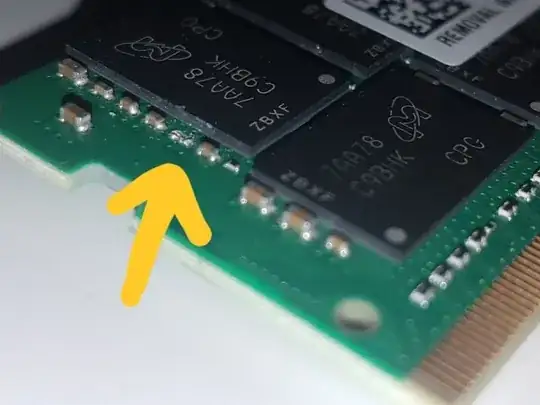It depends what you mean by "safe".
If safe = "won't cause my computer to burst into flames" then probably yes. The component you knocked off is a capacitor which is used for ensuring stable voltage supply to the module. Since you haven't bridged the contacts otherwise, there is no electrical hazard here to the module or anything it's connected to.
If safe = "will run at its rated frequency" then possibly no. In the case of a memory module, such a capacitor is likely to be used to ensure that the contents of the data sent to the module remain stable and do not arbitrarily change due to voltage instabilities. The end result is that without that capacitor, the module is more likely to suffer from data errors. At higher frequencies more capacitance is required to prevent data corruption in the module, so it may no longer be able to reach its rated speed.
If safe = "won't corrupt my data" then almost certainly no. As per the previous point, that capacitor was put there to ensure data integrity, without it you are more likely to get odd errors such as bit flips.
However, "more likely" does not mean "will". If your PC has a good quality power supply and/or your motherboard is a higher-end one with more circuitry for the RAM, the voltage signal sent to the RAM will be more stable, and thus it's less likely the missing cap will matter.
Personally, I would replace the module regardless of the cost. Memory test applications are generally only able to diagnose extremely obvious faults in memory modules, i.e. not the type of transient errors I mentioned. It's entirely possible to have a module pass a memory test and immediately fail when a different application causes it to be accessed in a different way. So don't trust MemTest too much.
Finally, it should go without saying that all of the above is void should you attempt to apply more voltage to this module or increase its frequency (e.g. for overclocking).
